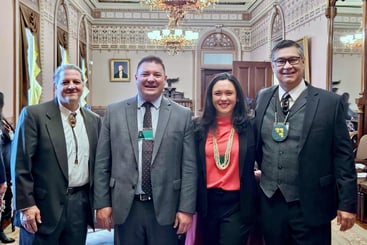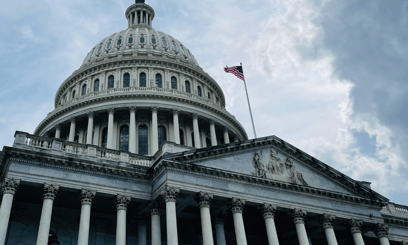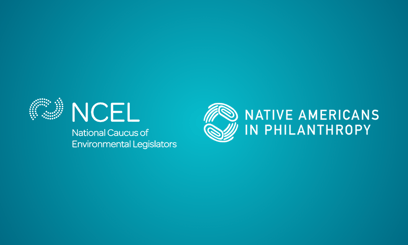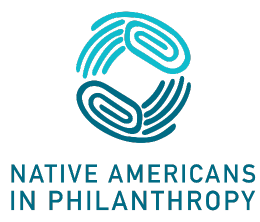COVID-19’s Impact on the Indigenous Workforce
COVID-19’s Impact on the Indigenous Workforce
Photograph courtesy of AISESIn this edition of Amplifying the Voices of Tribal Communities in Response to COVID-19, we're honored to have the perspective from a valued Board Member and national leader in Indian Country. Sarah EchoHawk (Pawnee) is the Chief Executive Officer of the American Indian Science and Engineering Society (AISES). She shares her perspective on the Coronavirus' impact on the Indigenous workforce.
AISES is a national nonprofit organization focused on substantially increasing the representation of American Indians, Alaska Natives, Native Hawaiians, Pacific Islanders, First Nations, and other indigenous peoples of North America in science, technology, engineering and math (STEM) studies and careers. Across the U.S. and Canada, AISES supports 23 professional chapters, 199 college chapters, 157 K-12 affiliated schools, and four newly created tribal chapters. Specifically, AISES focuses its work in three areas: Student Success, Career Support, and Workforce Development. At our core, AISES is about creating an Indigenous workforce to serve in the most in-demand and critically needed fields. Each year, AISES holds the largest college and career event in Indian Country where over 250 universities and employers come to recruit Indigenous STEM students and professionals.
What are the biggest challenges businesses are facing when it comes to the COVID-19 epidemic?
From a macro perspective, due to the economic ramifications of COVID-19, we are already seeing businesses across the U.S. and Canada beginning to layoff employees. We are not yet sure what the ultimate impact will be on unemployment rates but we do know it is already significant. Rising unemployment will, of course, have a detrimental effect on the economy. Additionally, as we emerge from this crisis, we will need to be ready with a skilled workforce to help rebuild the economy. Thus, we need funders to continue to invest in our work.
From more of a micro perspective, our Native communities, many of which have fledgling developing economies, are being hit hard. Unlike other businesses, tribal businesses directly support infrastructure on reservations. Revenue from these businesses is used to fund essential services, including health care. As such, as tribal businesses downsize or shut down operations, they will lose those tribal members with the most in-demand skills – many of which will be forced to leave their communities to find work elsewhere. And as Tribal Nations experience a decline in revenue, nonprofit organizations, like AISES and others, will be increasingly called upon to help fill the gaps. Thus, continuing or increasing support to these organizations is also critical.
What are some things you wish the broader public and funders knew?
In order to be a strong nation, we have to have a skilled workforce – specifically a skilled STEM workforce. While our work is important to Indian Country, it is equally important to the Nation as a whole. The U.S. has not been producing enough STEM talent and as a result, we are losing our competitive edge. This is why you see so much focus on STEM education these days – we all recognize we are woefully behind other countries in STEM education and our STEM workforce. Indian Country has enormous potential for helping fill this gap but it has been largely untapped and unsupported in (STEM) workforce development. Supporting STEM education beginning in K-12 schools and providing a clear pathway to college in both urban and reservation settings is critical.
How have you seen community members come together to support each other?
Indian Country as a whole has quickly mobilized and is sharing and exchanging information primarily through communications with Tribal Nations and the many national Native nonprofit organizations that serve Indian Country. There have been some large calls organized to update Tribal and Native nonprofit leaders in regard to how federal agencies, Congress, and the White House are (or are not) including Native people and communities in their strategic responses to the current crisis. Additionally, many of the national Native nonprofit organizations have been collaborating to create and support collective strategies to elevate the needs of Native people and communities during this difficult time. Much of this work is focused on ensuring that philanthropic organizations include our people and communities in their strategic responses to this crisis.
How can funders and philanthropy help you and your community right now?
Our concern with the current crisis surrounding COVID-19 is that all resources will be shifted to crisis funding in lieu of continuing to fund Native communities and the nonprofits that also support them. While we recognize and indeed agree that crisis funding must be a priority, we also want funders to recognize that during this crisis, and even after it subsides, continued funding will be paramount to the rebuilding and healing that will need to take place to move forward.
How can the general public help your community right now?
First and foremost, recognize that Native communities – whether urban or reservation – are struggling just as much as other communities. All too often it seems our biggest challenge is just being visible in contemporary society. As such, we need more allies. We need more people to help advocate for us.
Yes, I want to support AISES' mission with a financial contribution!




Comments